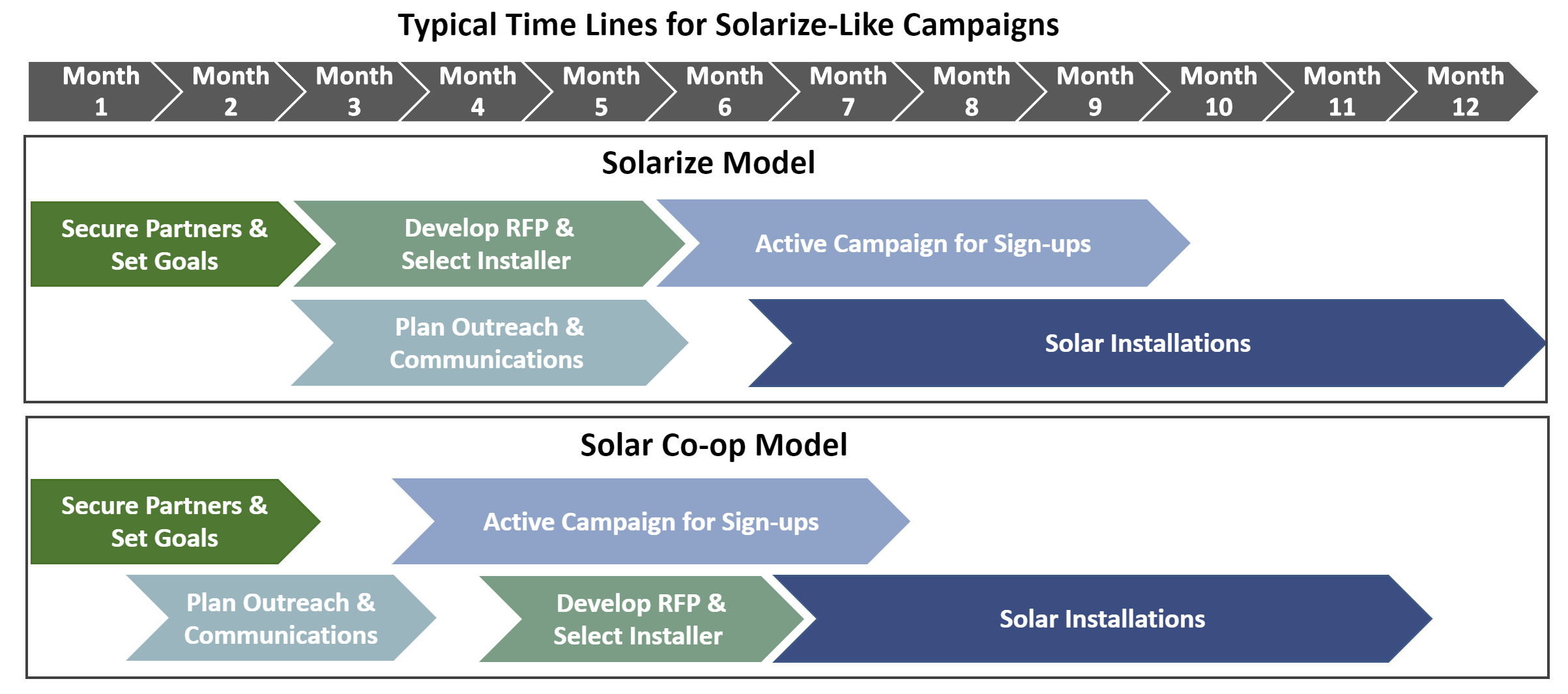Once the team has aligned on campaign goals, it should prioritize building the campaign’s structure and time line to establish deadlines. Two primary structural decisions that impact the campaign start and end dates are:
- When to issue and who issues the RFP
- When to select and who selects the installer
In a typical Solarize campaign, a steering committee selects the solar installer before launching the enrollment period. The sign-up window for these campaigns is usually short since participants just need to sign a predetermined contract.
In contrast, in the Solar United Neighbors’ Solar Co-op model, the team begins outreach and launches the enrollment period before an installer is selected. Once a critical mass of residents signs up, they can weigh in on the selection process, after which additional participants can sign up. Two sample time lines are shown in the graphic below.

